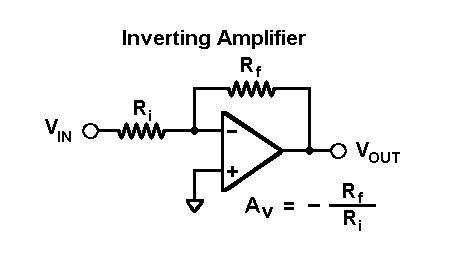What I've learned so far from Navy school is that operational amplifiers are used as a substitute for transistor amplifiers and they contain three main circuits: the differential amplifier, common collector amplifier and the push-pull amplifier. They are represented by a triangle pointing to the right. My question is, why is the voltage gain \$-\frac{R_f}{R_i}\$

As far as I know, \$R_f\$ provides negative feedback to \$v_{in}\$, but why are we not treating \$R_{in}\$ and \$R_f\$ as part of a voltage divider like a non-inverting amplifier? I can see how they would reason that the incoming current is \$-\frac{v_{in}}{R_{in}}\$ without the voltage divider
My other question has to do with a bridge rectifier. I had an operational amp test today and did not understand how to answer questions related to what certain components did in a circuit. If I added a load resistor to a bridge rectifier would that decrease the AC ripple and increase the output voltage? Is that load resistor used to prevent the capacitor C2 from conducting?

